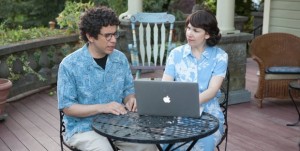CBC hero and host of the radio show Q, Jian Ghomeshi, has been surrounded by controversy after allegations of sexual misconduct surfaced, and he was fired from the CBC. Currently 9 women have come forward with allegations, however, when there were only 1 or 2, Ghomeshi released a statement on social media, hoping to prevent a social media outburst. The support of his statement was short lived as the list of accusers grew to 9 women. Each of the women seemed to be convinced to share their experiences as other women started coming forward- their shared experiences marking a trend, a trend of inappropriate behaviour by Ghomeshi that wasn’t confined to “one uncertain occasion”. Not only do the 9 women together create a stronger case against Ghomeshi, but the women themselves, by initiating an exigence to share among one another, create an exigence for many women to share their stories of sexual abuse.
These blogs from MTV host Jessi Cruikshank and this other blog are examples of the stories women have been sharing about their personal experiences with sexual assault, spurned on by the numerous accounts of alleged assault at the hands of Ghomeshi.
Social media is shown in these blogs as an outlet for personal narratives. However, these narratives are written and shared as a result of an exigence created by the Ghomeshi affair and the numerous women continuing to come forward. It is important to note how social media marks trends in what is shared. At first, when Ghomeshi released his statement, he was surrounded by overwhelming support from fans, even the Green party leader Elizabeth May. However, as the women alleging assault against him grew, the trend on social media was to label him a sexual predator, a flawed former hero, and a deviant.
Three women wasn’t enough for blogs like the above to show up, or for popular belief of Ghomeshi’s guilt to develop. However, as women continued to come forward, the authenticity of their statements became legitimate by their numbers.
The Ghomeshi affair raises many questions concerning allegations of assault, why women are afraid to come forward, and society’s views concerning sexual deviancy. However, the numbers of women coming forward reminded me of Missing Sarah, and The World is Moving Around because of the concept of cultural authority. Many of the women speaking out about their experiences with Ghomeshi are educated and accomplished, however, before there were many of them and before they put their names on the record, they were not believed. Ghomeshi was seen, by the general population on social media, as more credible- the likes on his media release “jilted girlfriend” claim had hundreds of thousands of likes at first, but as women put their names forward and their numbers grow, the likes declined by hundreds a day.
Overall, I think the Ghomeshi affair’s discussion over social media indicates dominant public opinion on the affair, and the growing personal narratives of various women’s experiences with sexual assault are the result of an exigence created by the sheer amount of women coming forward, and the relative acceptance of these allegations over social media.


